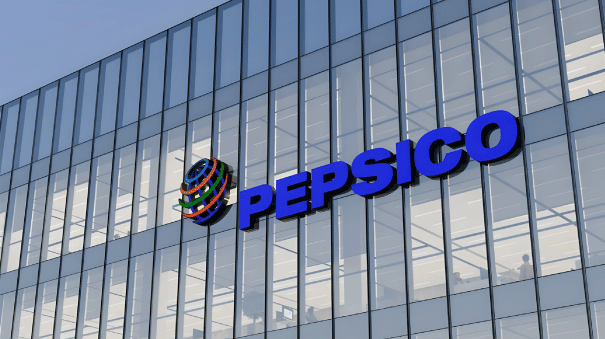This blog recaps key insights from our recent webinar, “Tackling Cybersecurity Attacks with AI & ML.” In today’s rapidly evolving cyber threat landscape, the traditional reactive approach to IT security is no longer enough. This article explores how AI and ML are transforming the way businesses proactively manage cybersecurity, covering the latest trends and practical strategies for enhancing security and minimizing risks.
- 2024 Cybersecurity Trends: Quick glance into the current industry trends.
- Proactive Threat Management: Learn how fully managed IT services can help mitigate cybersecurity attacks before they cause harm.
- Leveraging Advanced Technologies: Discover how enterprise IT managed services use AI and ML to enhance your cybersecurity defenses.
In today’s evolving threat landscape, a reactive approach to cybersecurity is no longer sufficient. The shift toward proactive IT management, driven by managed IT services, is transforming how businesses defend against cyberattacks. This blog, based on our recent webinar, explores the latest cybersecurity trends and how AI and ML empower organizations to take control of their security strategies.
About the Speaker
Chandra Shekhar Pandey, founder and CEO of Seceon Inc., is a thought leader in cybersecurity with 24 years of experience. His expertise spans across various domains, including IT infrastructure support and managed IT cloud services, where he has been pivotal in developing advanced solutions. Chandra’s deep understanding of modern security challenges and the potential of AI and ML make him a leading voice in cybersecurity innovation.
2024 Cybersecurity Trends: A Shifting Landscape
The cybersecurity landscape in 2024 has drastically changed, with new technologies and working models reshaping attack surfaces. Here’s a closer look at key trends:
- Death of Perimeter: As businesses move towards managed IT outsourcing, traditional network perimeters are becoming obsolete, making cloud security a top priority.
- IoT and Cloud Complexity: The rise of connected devices and managed IT cloud services creates additional vulnerabilities.
- Tool Overload: Many organizations depend on a patchwork of tools offered by managed services IT providers, but when not integrated, these tools can lead to inefficiencies in threat detection.
- Rising Sophistication of Attacks: Cybercriminals are using advanced AI tactics to evade detection, emphasizing the need for advanced infrastructure transformation services.
- Talent Shortage: As the cybersecurity talent gap grows, organizations are turning to managed services IT providers to bridge the gap with automation and AI-powered solutions.
- Compliance Challenges: Staying compliant with regulations like GDPR and HIPAA requires the ongoing support of fully managed IT services.
Key Takeaways: Why Proactive Over Reactive?
Moving from reactive to proactive cybersecurity offers several strategic advantages:
- Preventing Incidents Before They Escalate: A proactive strategy, often provided by fully managed IT services, emphasizes threat detection before an attack can cause harm.
- Improved Network Visibility: Enterprise IT managed services using AI and ML offer unmatched network visibility, identifying vulnerabilities before they can be exploited.
- Rapid Threat Response: Managed IT services and support powered by AI can respond faster to incidents, minimizing the impact of potential breaches.
- Strengthened Security Posture: Regular vulnerability assessments, patch management, and predictive analytics are critical components of infrastructure transformation services, ensuring organizations stay ahead of emerging threats.
Proactive Threat Management: Defense with AI & ML
AI and ML are game-changers in cybersecurity, enabling organizations to shift from reactive measures to a robust, proactive defense strategy:
- Continuous Monitoring and Real-Time Alerts: AI-powered managed IT services continuously monitor systems for suspicious activity, ensuring issues are flagged early.
- Predictive Analytics for Threat Forecasting: Managed IT cloud services utilize machine learning to predict future attack vectors, allowing teams to focus on the most vulnerable areas.
- Automated Threat Mitigation: AI-driven IT infrastructure support can automatically respond to low-level threats, preventing small issues from escalating.
- Optimizing Security Resources: Managed IT outsourcing frees up cybersecurity teams by automating routine tasks, allowing them to focus on complex threats.
Leveraging AI & ML in Cybersecurity
AI and ML provide significant advancements in key cybersecurity areas:
- AI-Driven Threat Detection: Managed IT services leverage AI to process enormous volumes of data, improving threat detection accuracy.
- ML for Predictive Security: By analyzing past attack patterns, managed services IT providers can predict potential vulnerabilities and recommend preemptive actions.
- AI-Powered Automation: With automated systems, AI takes over routine tasks, streamlining operations for managed IT services and support.
Dark Web Monitoring: Protecting Credentials
A key benefit of using AI is its ability to continuously scan the dark web for leaked credentials. Fully managed IT services can act swiftly to secure compromised accounts, minimizing damage.
The Human Element: Internal Training is Key
While AI and ML are crucial, a well-informed workforce remains essential to cybersecurity success. Managed IT services include employee training and simulations to bolster internal defenses:
- Regular Employee/Internal Training: Employees trained by managed IT services and support can better identify phishing attempts and other threats.
- Phishing Simulations and Workshops: These programs, provided by enterprise IT managed services, reinforce a culture of security awareness.
Conclusion
The shift from reactive to proactive IT management, supported by AI and fully managed IT services, is crucial in today’s cybersecurity landscape. Organizations adopting these technologies will improve their security posture, prevent attacks before they happen, and streamline operations. With managed services IT providers leading the way, businesses can effectively navigate the ever-changing cyber threat environment and safeguard their digital assets.

